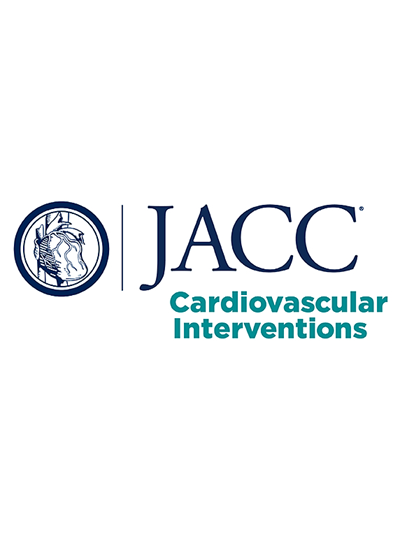Surgical Mitral Valve Repair vs Replacement After Failed Mitral Transcatheter Edge-to-Edge Repair
IF 11.7
1区 医学
Q1 CARDIAC & CARDIOVASCULAR SYSTEMS
引用次数: 0
Abstract
Background
The impact of mitral valve (MV) surgery type after failed mitral transcatheter edge-to-edge repair (M-TEER) has not been well studied.
Objectives
The aim of this study was to compare the outcomes of MV repair vs replacement after failed M-TEER.
Methods
From 2009 to 2020, a total of 332 patients across 34 centers from the CUTTING-EDGE registry underwent MV surgery after M-TEER. Outcomes were compared between MV repair and replacement. Primary outcomes included 30-day mortality and 1-year survival after MV surgery.
Results
Among enrolled patients (mean age 73.8 ± 10.1 years, median Society of Thoracic Surgeons Predicted Risk of Mortality 3.9% [Q1-Q3: 2.2%-6.8%]), 25 (7.5%) underwent repair and 307 (92.5%) underwent replacement. The replacement group had a significantly higher rate of comorbidities, including atrial fibrillation, prior cardiac surgery, more secondary mitral regurgitation, and more devices implanted at index M-TEER (P < 0.05 for all). Replacement patients showed a trend toward higher 30-day mortality (17.7% [52 of 294] vs 4.0% [1 of 25]; P = 0.094). The observed-to-expected ratio of 30-day mortality was 3.6 (95% CI: 1.9-5.3) overall, 3.8 (95% CI: 2.1-5.5) in the replacement group, and 1.7 (95% CI: 0.7-3.3) in the repair group. Replacement patients had higher 1-year mortality (33.3% [65 of 195] vs 10.5% [2 of 19]; P = 0.041). Significantly lower survival rates were observed after replacement at 2 years (P = 0.033) and persisted in the risk-adjusted Cox regression analysis (HR for replacement: 4.24; 95% CI: 1.04-17.31; P = 0.044).
Conclusions
MV surgery after failed M-TEER is a high-risk procedure associated with higher than expected 30-day mortality, with higher mortality associated with MV replacement. Compared with repair, replacement is associated with higher 1-year mortality and a lower 2-year survival.
外科二尖瓣修复与经导管二尖瓣边缘修复失败后的置换术
背景二尖瓣(MV)手术类型对经导管二尖瓣边缘修复(M-TEER)失败的影响尚未得到很好的研究。目的本研究的目的是比较M-TEER失败后MV修复与置换的结果。从2009年到2020年,来自尖端注册中心的34个中心的332名患者在M-TEER后接受了MV手术。比较两组修复与置换的结果。主要结局包括中压手术后30天死亡率和1年生存率。结果入选患者的平均年龄为73.8±10.1岁,胸外科学会预测的死亡风险中位数为3.9%[第一季至第三季:2.2%-6.8%]),25例(7.5%)行修复手术,307例(92.5%)行置换术。替换组的合并症发生率明显更高,包括心房颤动、既往心脏手术、继发性二尖瓣返流更多、M-TEER指数植入装置更多(P <;0.05)。替代患者显示出更高的30天死亡率趋势(17.7%[294例中的52例]vs 4.0%[25例中的1例];p = 0.094)。总体观察到的30天死亡率比为3.6 (95% CI: 1.9-5.3),置换组为3.8 (95% CI: 2.1-5.5),修复组为1.7 (95% CI: 0.7-3.3)。替代患者的1年死亡率更高(33.3%[195例中的65例]vs 10.5%[19例中的2例];p = 0.041)。置换后2年生存率显著降低(P = 0.033),经风险调整的Cox回归分析显示生存率持续降低(置换后的HR: 4.24;95% ci: 1.04-17.31;p = 0.044)。结论M-TEER失败后的smv手术是一种高风险手术,其30天死亡率高于预期,与MV置换术相关的死亡率更高。与修复相比,置换术的1年死亡率较高,2年生存率较低。
本文章由计算机程序翻译,如有差异,请以英文原文为准。
求助全文
约1分钟内获得全文
求助全文
来源期刊

JACC. Cardiovascular interventions
CARDIAC & CARDIOVASCULAR SYSTEMS-
CiteScore
11.60
自引率
8.80%
发文量
756
审稿时长
4-8 weeks
期刊介绍:
JACC: Cardiovascular Interventions is a specialist journal launched by the Journal of the American College of Cardiology (JACC). It covers the entire field of interventional cardiovascular medicine, including cardiac, peripheral, and cerebrovascular interventions. The journal publishes studies that will impact the practice of interventional cardiovascular medicine, including clinical trials, experimental studies, and in-depth discussions by respected experts. To enhance visual understanding, the journal is published both in print and electronically, utilizing the latest technologies.
 求助内容:
求助内容: 应助结果提醒方式:
应助结果提醒方式:


